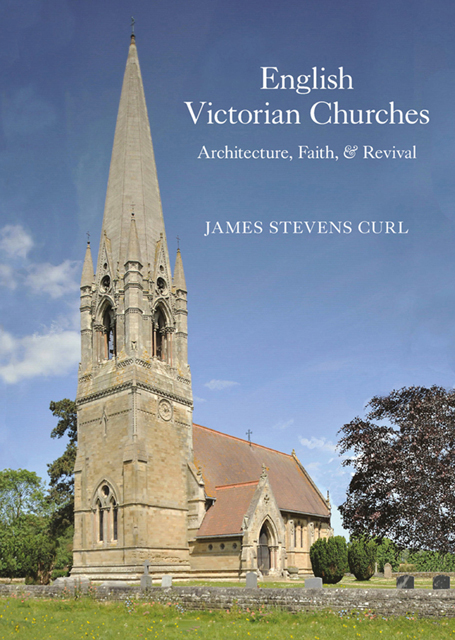Book contents
- Frontmatter
- Dedication
- Contents
- Foreword by Barry Orford
- Preface and Acknowledgements
- Note on Illustrations
- 1 An Introduction to Denominations and Victorian Churches
- 2 Architecture, Antiquarianism, and Styles
- 3 The Religious Atmosphere in the 1830s and 1840s
- 4 Recusants, Goths, Converts, Ultramontanes, and Controversies
- 5 The Anglican Revival
- 6 The Search for an Ideal
- 7 Church Architecture of the 1850s, 1860s, and Early 1870s
- 8 The Late Victorian Anglican Church in Several Manifestations
- 9 Non-Anglican Buildings for Religious Observance
- 10 Epilogue
- Select Glossary
- Select Bibliography
- Index
Preface and Acknowledgements
Published online by Cambridge University Press: 08 June 2023
- Frontmatter
- Dedication
- Contents
- Foreword by Barry Orford
- Preface and Acknowledgements
- Note on Illustrations
- 1 An Introduction to Denominations and Victorian Churches
- 2 Architecture, Antiquarianism, and Styles
- 3 The Religious Atmosphere in the 1830s and 1840s
- 4 Recusants, Goths, Converts, Ultramontanes, and Controversies
- 5 The Anglican Revival
- 6 The Search for an Ideal
- 7 Church Architecture of the 1850s, 1860s, and Early 1870s
- 8 The Late Victorian Anglican Church in Several Manifestations
- 9 Non-Anglican Buildings for Religious Observance
- 10 Epilogue
- Select Glossary
- Select Bibliography
- Index
Summary
I have a good eye, uncle: I can see a church by daylight.
William Shakespeare (1564–1616): Much Ado About Nothing (1598–9), Act 2, Scene 1, line 86.Gratia pro rebus merito debetur inemptis (thanks are justly due for things unbought).
Publius Ovidius Naso (Ovid) (43 bc–c.ad 17): Amores, i, Elegy 10, 43.More than six decades have passed since my earliest observations on under-appreciated and often threatened Victorian architecture were published, and half a century ago my first book on the period appeared; since then, problems of neglect, inner-city decay, vandalism (official and unofficial), and the march of time have further eroded a rich 19th-century legacy. Yet we could learn much from the Victorians concerning architecture that often rose to its occasion, and of all Victorian building types, none is as fascinating as that designed for Christian worship. Into their churches Victorians poured creative genius, and the finest exemplars stand comparison with the best mediæval work, often surpassing it in quality.
I have long been interested in ecclesiastical buildings, and have travelled in every English county to study them. Mention of counties prompts an explanation: throughout, I have used the names of old counties to describe locations because, first, they are still widely recognised despite subsequent changes; second, the Buildings of England series is arranged county by county; and, third, the old county boundaries were related to diocesan boundaries, and had profound historical associations. Yorkshire is presently divided into West, South, and North Yorkshire, and, bizarrely, the East Riding (which I identify as ER): I have retained the former North and West Ridings, using abbreviations NR and WR as appropriate. Cumbria (created 1974) I have had to accept: it embraces Cumberland, Westmorland, the Furness district of northern Lancashire, and Sedbergh district, formerly within Yorkshire’s West Riding.
As we move into the third decade of the 21st century, it becomes more difficult to explore churches. Often the finest works of architecture in an area, they are terra incognita to a largely uninterested population: there are even indications that any building that can be considered as real architecture will be an object of loathing for the visually desensitised, while anything connected with the Middle Ages, especially ‘Gothic’, is dismissed as ‘irrelevant’.
- Type
- Chapter
- Information
- English Victorian ChurchesArchitecture, Faith, and Revival, pp. xi - xviPublisher: Boydell & BrewerPrint publication year: 2022



